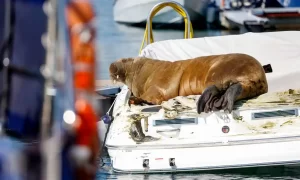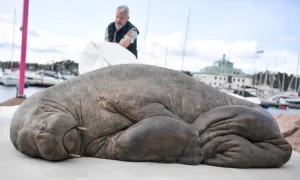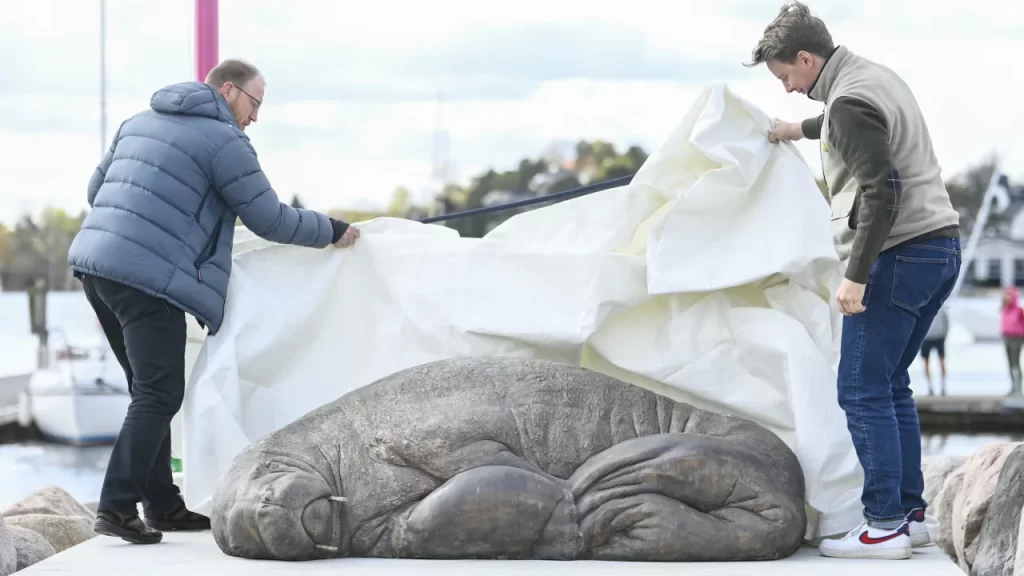Tsuktiben Jamir
From what we know of walruses, they are usually found in herds, so seeing a single walrus all by herself at Oslo’s busy Frognerkilen harbour stood out as a sore thumb. Needless to say, the citizens and tourists adored her. People from all over Norway and beyond gathered to observe Freya the walrus as she ate, lay in the sun, and—most often—sleep on boats in the harbours around the country’s southeast coast for days or weeks at a time. Freya, who was thought to be five years old, was frequently spotted in one of Oslo’s busiest harbours, the Frognerkilen harbour, 1,200 miles away from Svalbard, where researchers think she may have originated.

Courtesy: The Guardian.
However, due to her popularity, visitors often disregarded the Norwegian Directorate of Fisheries’ warnings to stay a safe distance from Freya and instead got up close to snap pictures of her or even threw things at her; this put the visitors in risk. Unfortunately, this led the directorate to come to a difficult decision to execute her, for the safety of the people. This obviously infuriated many people around the nation.
Eventually, Freya began showing symptoms of stress, and officials decided to put her down in August of 2022, out of concern for the safety of bystanders who did not abide by their instructions to maintain their distance. What happened to Freya was definitely not fair; her only crime was living her life the only way she knew how, basking in the sun and bothering no one. It was the ignorance of the people that gave a tragic end to such a beautiful creature.
In her memory, Norwegian artist Astri Tonoian’s life-size bronze sculpture of Freya was revealed on Saturday at the Oslo waterfront, very close to where the 600-kg (1,300-pound) walrus was usually spotted lounging about during the summer of 2022. Astri told CNN that she hopes her sculpture serves as a “three-dimensional history lesson” to all people. She thinks that the Directorate of Fisheries in Norway ought to have handled the circumstance more ethically; “The authorities could have acted more quickly and tried to move her instead of shooting her. They waited too long and it became dangerous for the people. They decided to do the ‘quick fix’.”

Courtesy: The Guardian.
The money for the sculpture was raised through a crowdfunding effort, according to the Norwegian news agency NTB. By October, the private initiative had amassed roughly 270,000 Norwegian Kroner ($25,000). At the unveiling, the organiser of the fundraising campaign Erik Holm said, “I started this because I’m furious about the way the fisheries directorate and the state handled this situation.” He went on to say, “Beyond the issue of Freya, we need to ask ourselves how we treat animals and nature. We need to think about our relationship to wildlife.”
The artist, Astri Tonoian also said, “In my head, my goal was to make an immortal symbol of people’s ability to mistreat not just wildlife but also humans.” Freya’s tragic story should serve as a lesson for everyone to realise that we humans share this world with a large population of other creatures, and we must respect the space they thrive in; we humans tend to have entitlement issues, but we must understand that the planet belongs to the other species as much as it belongs to us.





